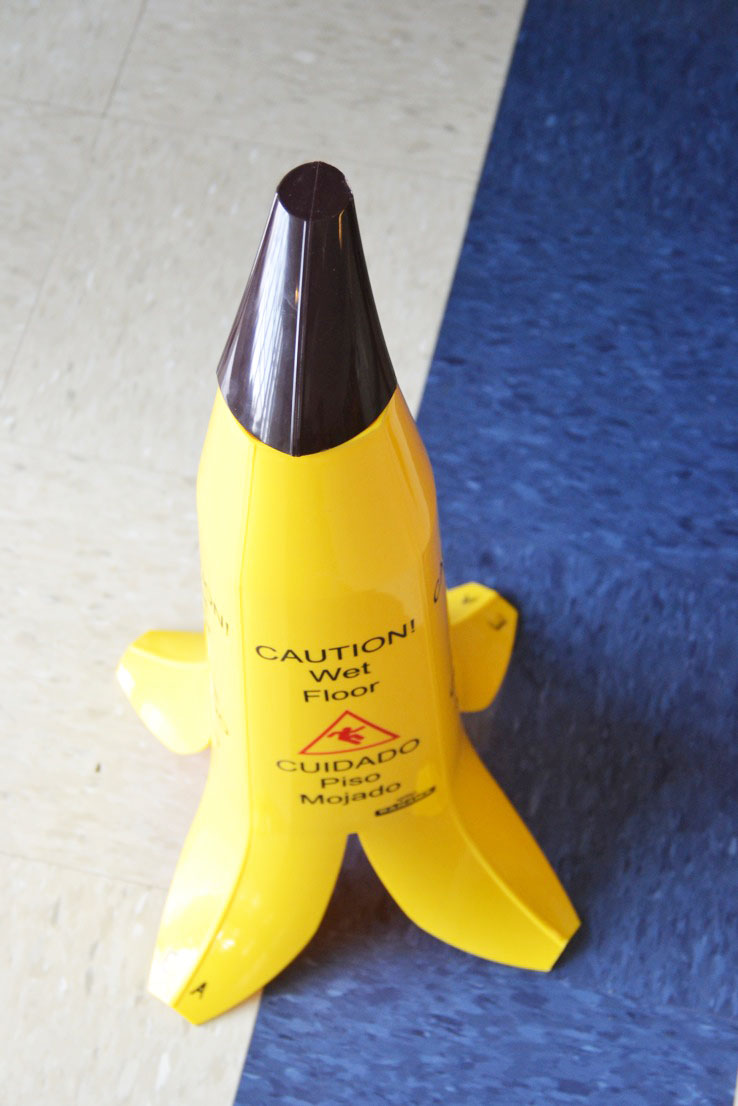Sam Niu ’15, Eunice Ju ’15: As a consequence of the worst winter since EA moved to Newtown Square, the school has witnessed numerous accidents among the faculty, including Charles Collins and Ellen Milewski. Collins, who fell outside his office in the Crawford Campus Center, will remain out of school for the remainder of the year. Milewski, who skidded on the floor, sustained a concussion from falling and hitting her head on the closet door. However, most students come to Anne Ravreby, Episcopal’s nurse, with only “bumps and bruises.” According to Ravreby, she has “seen more slip and falls because [the students are] playing Sochi Olympics down the snow bank, more fooling around outside.” Ravreby attributes the faculty accidents to the fact that, “This is the sixth year we’ve been on the campus and we’ve had snow, but nothing like this.”
However, the school is taking many measures to avoid future accidents. Ravreby, a member of the Safety Committee, said, “The maintenance and housekeeping people have been doing a great job. They have been very aggressive in terms of the floors and steps in keeping them as dry as they can be. Now you see more of the cones. They’ve also purchased new long runners because the ones that we had before were becoming saturated.”

Photo Courtesy of Sammi Ciardi ’15
Safety Committee Chair Len Haley has been actively working to alleviate the problems posed by this especially harsh winter. Episcopal is the only private school in the area safety certified. The Safety Committee meets monthly to discuss the safety issues facing the school and possible solutions.
According to Haley, the first steps have been to place more mats in the buildings and to apply UL-rated wax, a non-slip wax, to the floor. However, this wax too can pose problems of its own. “It can stop you short and you’ll go forward instead of slipping and your feet going out from under you,” said Haley. “No matter what kind of wax you have on the floor, when it mixes with calcium chloride or any oil based product, it can become slippery and that’s why it’s important to wipe your feet,” said Haley. In terms of mats, Haley added, “We’re looking into extending carpeting further down the hallway…It’s like defensive driving; it’s defensive walking.”
Haley also stressed the need to clean up messes and spills. “Kids and adults and faculty spill things on the floor and they never notify anybody.”
The Safety Committee is working together with Joe Shanahan, Manager of Campus Safety. They are focusing on clearing sidewalks and other paths with ice melt. However, Shanahan said, “You can see that we do our best to clear the sidewalks and the sidewalks will be clear and dry, but the kids are walking straight across the green, across the snow. In turn its on their shoes and they track it into the entrance ways and that defeats our efforts to keep the entrance ways dry.”
One solution is to reroute the sidewalks so that they match up with the commonly taken paths. As evidenced by the path of dead grass, turned icy path stretching across the green, students tend to take directs routes between buildings, dragging the snow and water in with them. On the possibility of new sidewalk paths, Shanahan clarified, “It’s being discussed. That’s something that the administration has to work out and see what aesthetically makes sense. You don’t want to go around haphazardly making changes to the campus so that would take awhile.”
As much as the Safety Committee and its various members can do, the easiest way to minimize or eliminate the chance of a fall, especially inside the buildings, is to be careful. This falls on the student body as much as the faculty. Ultimately, Haley said, “We could eliminate some of that cutting across [the green], we could wipe our feet, we could just be a little more cautious–like we are when we drive a car or if you had to go across an ice skating rink for some reason–, you would not walk the way you normally walk. You just have to tune into this…We [the Safety Committee] keep sending out [notices]: be careful when you’re on campus.”